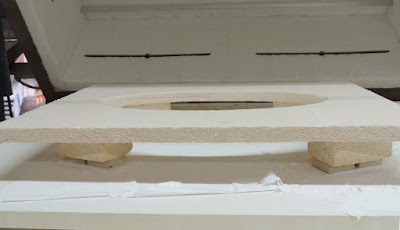Searching for a Relationship in Heat Work in the Slumping Range.
Now I know why so little research is published that indicates a lack of any positive results. It is disheartening. There is no pointer to other methods or relationships. It is difficult to pick yourself up and try something different.
Yes, this means that my testing for a relationship between time and temperature and degree of deformation was unsuccessful. With the means at my disposal the relationship between viscosity, heat work (time and temperature) and the degree of deformation is either too complex for my equipment, methods, or concepts. I found no formulaic relationship between time and heat to get the same amount of deformation, due (I believe) to the factor of viscosity. And I have no way to measure viscosity.
Some things did become apparent (many of them already known)
Holding time constant and increasing the temperature results in greater deformation. Nothing new in that. Holding the temperature constant and increasing the time results in more deformation. No general relationship could be determined. But at 650C changing the time from 15 minutes to 45 minutes resulted in an almost linear increase in the proportion of deformation, but a decreasing proportion from 35 to 55 minutes, although generally regular from 15 to 35 minutes.
There is a mild relationship in the amount of deformation between increasing time between 640C and 670C, but this breaks down at 630C and below, where increasing time does not “counteract” the lower temperature. My speculation is that the viscosity is too high below 630C to maintain that (very mild) relationship.
Top blue line is the temperature times 10; orange line is the temperature; the others are the thicknesses.
There is a relationship at a given temperature with the proportion of deformation within each thickness.
This graph shows increasing time at 650C. The 12mm thick test piece has a relatively regular change throughout the time range of 15 minutes to 45 minutes. The 6mm and 9mm pieces show similar proportional changes up to 35-minute soaks, but then drop as the time continues to increase. This is weird and requires further investigation to see if it is an experimental bias or something else.
At the best, this writing up of my failures, has led me to renewing my tests of deformation by controlling for time and for temperature separately. The first of the new tests is in the kiln now.









